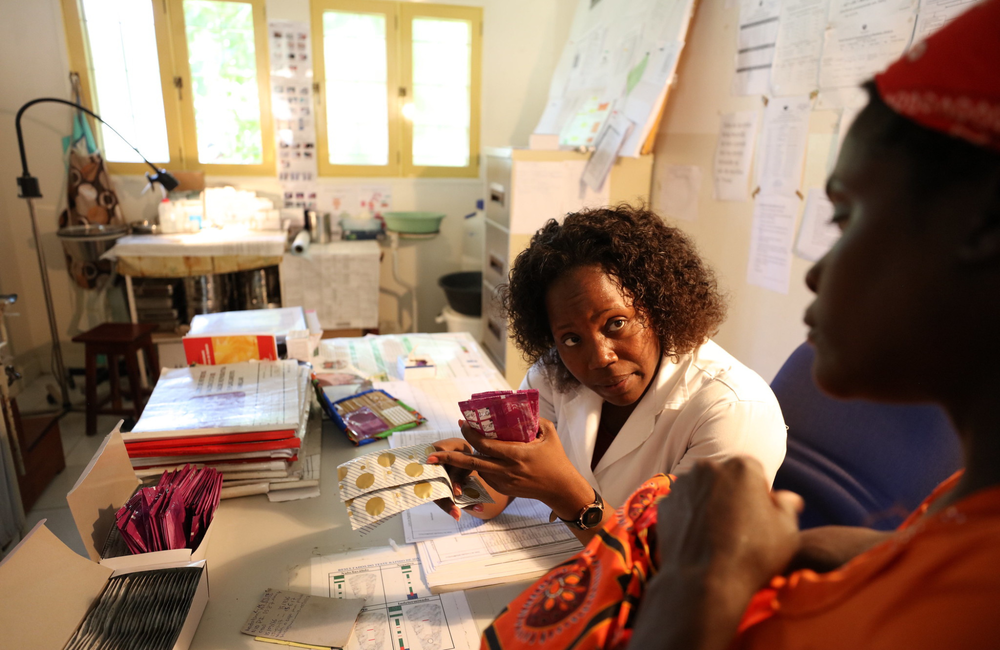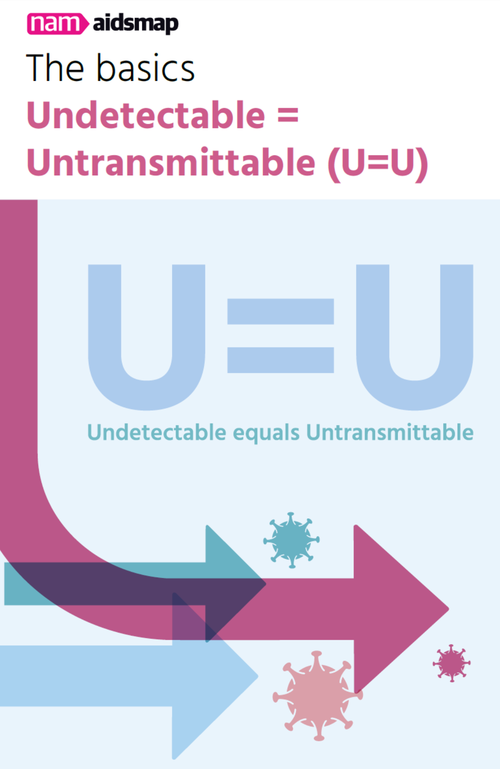
People living with HIV in South Africa expressed a lack of awareness, confusion, and scepticism regarding U=U, according to a recent qualitative study published in PLoS ONE.
Healthcare providers acted as gatekeepers and expressed fears that U=U knowledge would lead to increases in condomless sex.
Background
South Africa is home to the world’s largest number of people living with HIV – approximately 7.8 million. However, despite having the largest global antiretroviral treatment (ART) programme, uptake and adherence remain inadequate, with only 70% to 75% of all people living with HIV currently on treatment.
Estimates for progress towards the UNAIDS 95:95:95 goals (95% of all people with HIV know their status, 95% of those who know their status are on treatment, and 95% of those on treatment are virally suppressed) vary somewhat but are in the region of 94:79:91.
The Undetectable = Untransmittable (U=U) message is crucial knowledge for all people living with HIV and communities vulnerable to it. Knowledge of U=U has been linked to increases in HIV testing, and among those living with HIV, better treatment adherence, improved self-image, and less worry about encountering stigma around dating and sex.
While South Africa has had a universal test and treat protocol in place since 2016 – the same year that the U=U campaign was formulated – it is unclear how well this message is currently being communicated in primary healthcare clinics.
The study
Researchers, led by Dr Dorina Onoya from the University of Witwatersrand in Johannesburg, conducted focus group discussions and in-depth interviews with both people living with HIV and healthcare providers working at the primary healthcare level in the Gauteng and the Free State provinces of South Africa. Data were collected in 2021 and 2022.
Forty-two healthcare providers participated in five focus group discussions. These included nurses, lay counsellors, social auxiliary workers, peer educators and others in both provinces (HIV doctors and general practice physicians were not interviewed). Managers and counsellors from non-governmental organisations supporting the HIV treatment programme also participated.
An additional three focus groups were held with 27 people living with HIV from civil society organisations, who have been taking ART for some time. Some of these participants are dedicated to U=U advocacy while others provide peer support. An additional 27 in-depth interviews were conducted with people newly diagnosed with HIV, all in Johannesburg.
Lack of awareness and scepticism regarding U=U
While newly diagnosed participants were largely unaware of U=U, those who had been on ART for some time were sceptical about placing their trust in it to prevent transmission. In some instances, participants viewed the benefits of treatment and viral suppression in a positive light but did not necessarily connect these to the second U, being untransmittable. At times, participants also expressed confusion between ‘viral suppression’ and ‘undetectable’.
“So, when you are virally suppressed, I am just trying to understand this, because I don’t know this information. If you can help me. Because I know PrEP. . . if you are negative. Are you saying when you are virally suppressed; is that what the term is? Is it undetectable if it is suppressed?”
“I feel happy because I am adhering to my treatment which means I will live a longer life…. I lost hope when I found out that I’m HIV positive but as I kept coming to the clinic and the nurses telling me that the treatment is working my viral load is dropping and my baby was fine, I started gaining hope.”
Viral load testing was not always available or emphasised. The implications of an undetectable viral load were not always clearly explained in primary healthcare settings.
“Because I see it as a challenge because we say U=U, yes, we know that it works. We know that it’s undetectable, if I make sure that I take my treatment and adhere, I am not going to transmit HIV. But when you go to the facility, they don’t give you the viral load test. They don’t test you and even if they do test you, they’re not going to communicate or translate the results or interpret them to make sure that you understand.”
While some people living with HIV shared benefits related to ART adherence and an undetectable viral load – such as allowing them to return to being a ‘normal human’, for instance – there were also areas of doubt and a lack of knowledge. For example, there was uncertainty about how brief treatment interruptions could affect undetectability, a concern given infrequent viral load testing, which participants did not have control over.
Another source of scepticism related to condom use. Some healthcare providers were inflexible in the information provided and emphasised condom use despite clients being undetectable. While this may make sense when it comes to preventing other STIs, in some ways, it worked to contradict confidence in the science behind U=U.
Participants, especially those who believed U=U, often expressed that they were regularly having condomless sex anyway. Some shared that U=U knowledge made HIV disclosure easier. Saying that they were undetectable, as opposed to simply being ‘HIV positive’, indicated that they were being ‘responsible’ and ‘not careless’ with their health and that of their sexual partners. However, as U=U is not widely known in the broader community, it could be burdensome to share the U=U message and they emphasised the need for broader dissemination of U=U messages.
“U = U gave me hope, it gave me hope to live. Not just to live, but to live a healthy and productive life. I’m still a bit sceptical when it comes to informing people, and sharing information about the benefits of taking medication to a point that you can suppress viral load and not be able to infect the next person. I think it should be given to people based on their level of understanding.”
Healthcare providers still hung up on condoms
While nurses expressed more U=U awareness than lay counsellors, there was a general unease regarding the lack of standardised messaging related to U=U. Lay counsellors were often uncertain on topics such as the impact of brief treatment interruptions on undetectability. This meant that healthcare providers stuck to accepted and well-worn messages – relying on condoms as the primary means of preventing HIV transmission.
“How do you communicate saying, well if you take your ARVs correctly then you can stop using a condom? How do you communicate back without worrying that it might be misconstrued by the client and thinking okay let me just stop using a condom?”
In many instances, healthcare providers believed that patients would have more condomless sex if they knew about U=U (so called risk compensation). This was strikingly consistent across healthcare provider narratives, with a sense that sharing U=U would open a Pandora’s box of unintended consequences. There was little acknowledgement that U=U knowledge may work to increase treatment adherence – the healthcare providers disconnected the two Us.
“When we see that there is progress, then we are going to encourage this particular person to keep it up for viral load to go lower. We are looking at their benefits which is their health at that time. We are not talking about the external benefits which would be not infecting other people...”
At times, this led to moralistic instead of medical reasoning, with confusing and contradictory information being communicated to clients.
“You are virologically suppressed, this other person, his/her viral load is unknown or it’s high. The chances of you getting reinfected [with a new, potentially resistant strain of HIV] and for your viral loads to go high, are still there. So, hence we are saying we promote condom usage.”
The fears about inadvertently adding to HIV transmission by sharing the U=U message tended to create an untrusting vicious cycle. Healthcare providers were both afraid that patients would not understand the meaning of U=U, because of limited viral load literacy, while also expressing that they did not want to explain it, for fear of potential unintended consequences. In this, there were also underlying judgements related the clients’ behaviour that appeared to be grounded in HIV stigma, and stereotypes of promiscuity.
“I don’t think I’ll be comfortable telling the patient about U = U because we know the behaviour of patients who have that information. Then it means we’ll be telling them to go, you know, having unprotected sex with all the unknown partners.”
Conclusion
While South Africa explicitly references U=U in its National HIV Strategic Plan, the emphasis is broadly on using it to improve quality of life for those with HIV, and much of the responsibility regarding U=U awareness and implementation appears to be relegated to community organisations. The South African HIV Clinicians Society’s latest guidelines specifically mention that U=U knowledge should be developed to encourage adherence and emphasise its role in reducing transmission. However, based on participants’ responses, there are considerable barriers to this recommendation being implemented in frontline clinical settings.
Notions of risk compensation appeared to cloud healthcare providers’ judgement in many instances. The irony here is that important information which has the potential to improve ART adherence may be withheld from clients.
While the authors conclude by calling for the “crafting of locally appropriate messages” and “ensuring acceptability among both healthcare providers and people living with HIV”, they say very little about persistent HIV stigma, sex shaming and the agency of people living with HIV to make informed decisions about their sex lives when presented with accurate information about U=U.
Onoya D et al. Designing effective U=U communication strategies considering the needs of PLHIV, their partners, and healthcare worker constraints in South African clinics. PLoS ONE 18(12): e0295920, 2023 (open access).
https://doi.org/10.1371/journal.pone.0295920.
Full image credit: Health Education | Family Planning. Image by Dominic Chavez/The Global Financing Facility. Available at www.flickr.com/photos/thegff/45959989465 under a Creative Commons licence CC BY-NC-ND 2.0.

